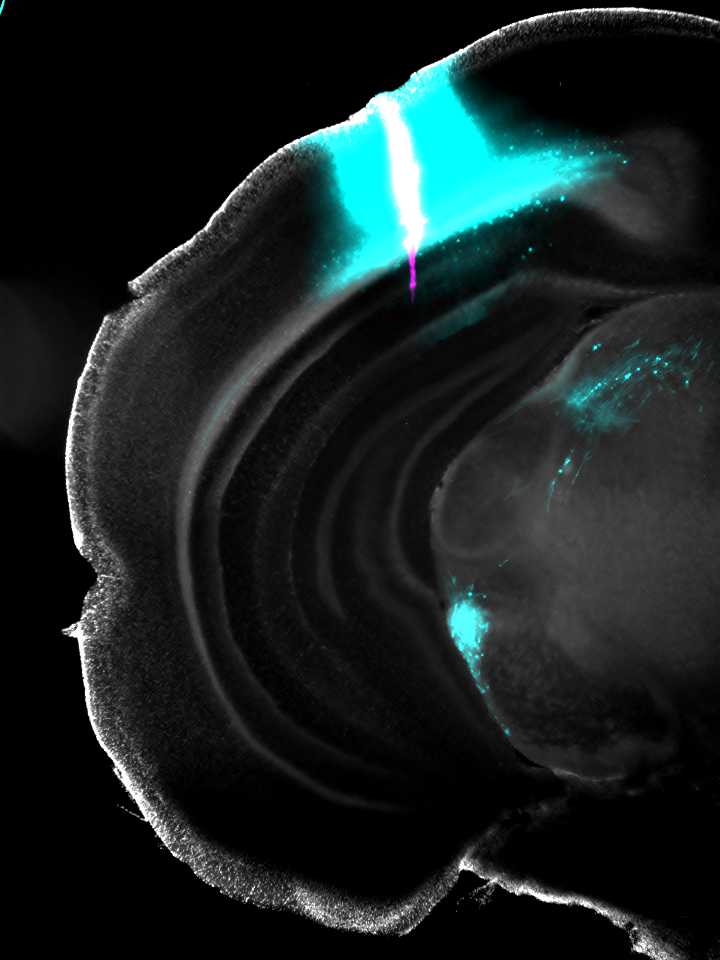Development and plasticity of circuits that support visual and cognitive function
Brain development unfolds in a series of overlapping events that begin in utero and continue through adolescence. While genetic programming directs the assembly of neural circuits, postnatal experience is instrumental for their functional maturation. In agreement, stressful early experiences can result in behavioral deficits and atypicalities.
This interplay of “nature and nurture” is well studied during late postnatal development of circuits that support sensory and social function, but less is known about the frontal, top-down circuits that modulate sensory processing and are critical for cognitive functions.
Drawing on our rich expertise in multiple fields (molecular biology, immunology, ecology, neurobiology, physics, etc.), our laboratory is studying the development and plasticity of prefrontal and visual circuits, aiming to uncover the mechanisms of typical and atypical development, as well as adaptive and maladaptive plasticity.
Some of the questions we are beginning to answer are:
a. What are the earliest steps in the development of frontal brain areas?
b. What happens to the neonate brain during birth and what processes in the neonate brain are triggered by birth?
c. What types of plasticity in the frontal and visual areas support adult learning?
We use a variety of tools for in vivo probing of circuit function in mice-extracellular electrophysiology, EEGs, 2-photon imaging, behavioral tracking, confocal microscopy, immunohistochemistry and anatomy, chemogenetics, optogenetics, and many more-to ultimately link early steps in circuit development to cognitive function in the adult brain.


